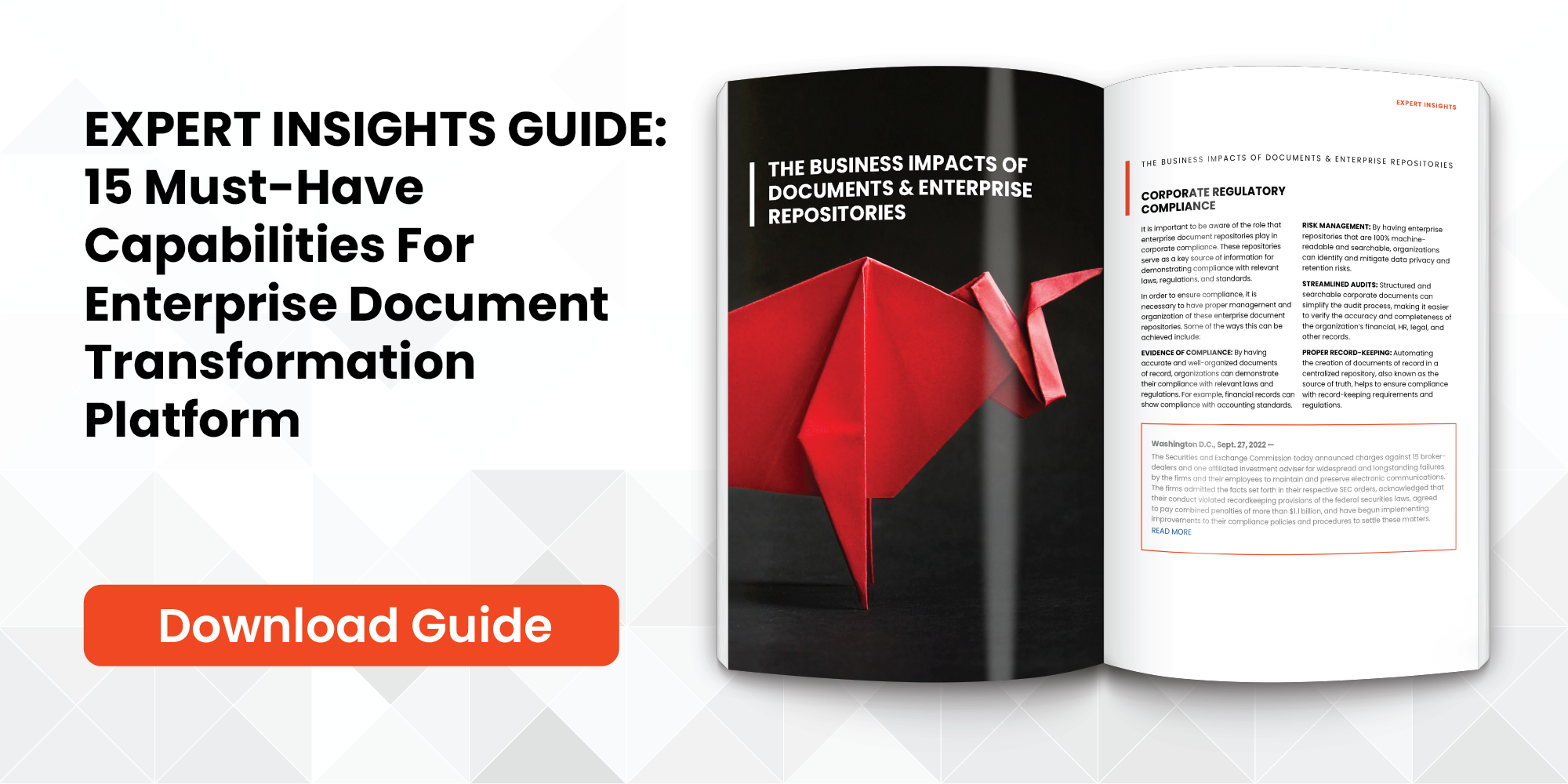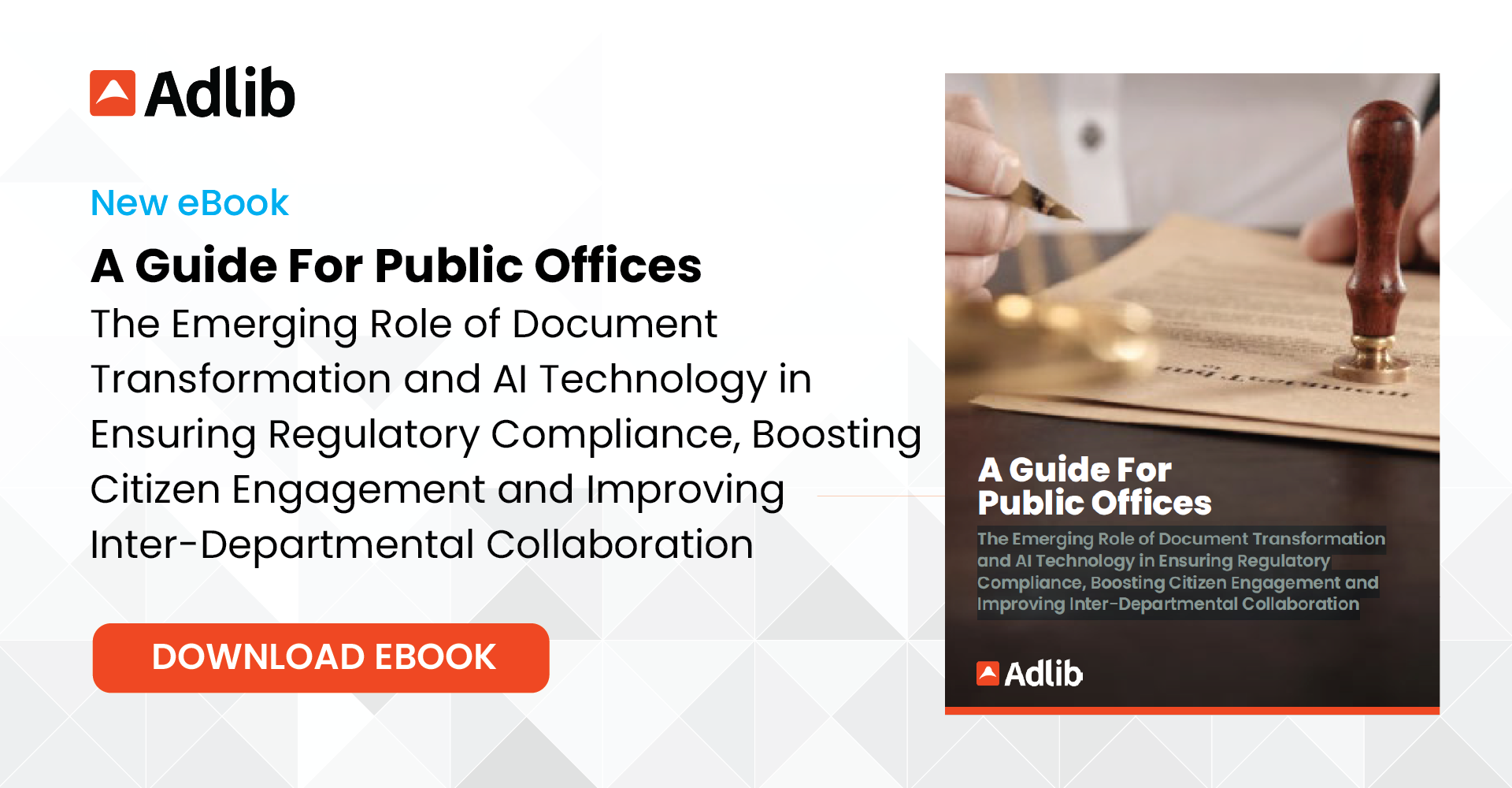Navigating the Shift from Paper to Digital: Document Transformation in Public Offices
In an increasingly digital world, the transition from paper-based systems to digital processes is not just an option for government offices - it's a necessity. This journey is much more than a simple change in medium. It's a transformative process that streamlines operations, improves efficiency, and provides significant benefits for both the organization and the citizens it serves. This shift is often powered by a process known as document transformation.
What is Document Transformation?
Document transformation is the process of converting documents from one format to another. In the context of a public office, this typically involves converting paper-based documents into digital formats, thereby making them more accessible, searchable, and easier to manage.
Why Document Transformation Matters
Document transformation is an essential part of the digital revolution. Its importance stems from the manifold benefits it provides to government offices, citizens, and overall public service delivery.
1. Enhanced Accessibility and Efficiency
A significant benefit of document transformation is the enhanced accessibility of information. In a paper-based system, retrieving a particular document or even a piece of information within a document can be a laborious and time-consuming process. By transforming these documents into digital formats, they become quickly searchable, saving time and significantly improving efficiency.
2. Improved Data Security
Digital documents also offer enhanced data security compared to their paper counterparts. Paper documents are susceptible to various risks, including theft, loss, or damage due to disasters. Digital documents can be encrypted, access-controlled, and backed up in multiple locations, providing superior protection against these threats.
3. Cost Reduction
Managing physical documents involves numerous costs - printing, storage, and disposal, not to mention the staff hours spent on filing and retrieving documents. By shifting to a digital format, government offices can eliminate these costs, resulting in significant savings.
4. Increased Transparency and Accountability
In the era of digital citizenship, there's an increased demand for transparency and accountability from government offices. Document transformation aids this by allowing for easy document tracking, version control, and audit trails. This not only makes the operations more transparent but also enhances accountability.
5. Enhanced Citizen Engagement
Document transformation also has a positive impact on citizen engagement. With digital documents, citizens can easily access the information they need, submit forms or applications online, and receive quicker responses. This improves the citizen experience and fosters higher engagement with government services.
6. Environmental Sustainability
Finally, document transformation contributes to environmental sustainability. By reducing the reliance on paper, government offices can significantly lower their environmental footprint, aligning with the global push towards more sustainable practices.
The Journey from Paper to Digital
The transition from paper to digital documentation is a significant undertaking that requires careful planning, execution, and adjustment. The journey typically involves several key steps, each of which contributes to creating a digital environment that is accessible, efficient, and secure.
Scanning
Scanning involves converting all paper documents into digital copies. This process is not as simple as it might initially seem. Given the volume of documents in government offices, this is a large-scale task that demands the right equipment. High-quality scanners, capable of handling large volumes without compromising on the quality of the digital copy, are essential. In some cases, it may be necessary to outsource this task to a specialized document scanning service.
Adlib works with one of the leading scanning solution partners to deliver a seamless end-to-end paper-to-digital solution to government and public administration customers. Connect with our team today!
Optical Character Recognition (OCR)
Once documents are scanned, they often undergo a process called Optical Character Recognition (OCR). OCR is a technology that extracts the text from scanned document images and converts it into editable and searchable data. This step is crucial because it allows for full-text searching of documents and further analysis by other technologies.
Indexing
After OCR, the digital documents are indexed. Indexing involves assigning relevant metadata to each document, such as the document type, date of creation, author, keywords, and more. This metadata will act as a 'tag' that makes it easier to locate and retrieve the document from a database. An efficient indexing system can greatly enhance the accessibility and manageability of digital documents.
Storage
The next step is to store the digitized and indexed documents in a document management system (DMS). A DMS is a software that helps in storing, managing, and tracking electronic documents. It allows easy access, search, and management of documents and can often integrate with other systems in the office, such as email or customer relationship management (CRM) systems. In selecting a DMS, it's important to consider factors like storage capacity, user-friendliness, security features, and integration capabilities.
Disposal
Once all documents are digitized, securely stored, and backed up, the original paper documents can often be disposed of securely. This not only frees up physical space but also minimizes the risk of damage or loss of physical documents. However, it's crucial to comply with any legal requirements regarding document retention before disposing of any originals.
Training and Adjustment
And lastly, as with any significant change, the shift from paper to digital requires staff training and adjustment. Employees need to be trained on how to use the new digital systems effectively. Additionally, there may be some resistance to change, and it's important to address this through clear communication about the benefits of the transition and providing support throughout the adjustment process.
Challenges and Solutions in Document Transformation
While the benefits of document transformation are substantial, it's important to acknowledge and prepare for the challenges that come with this transition. However, with every challenge, there are viable solutions to mitigate them and ensure a smooth transition from paper to digital.
1. Challenge: Data Security and Privacy
Moving to digital documentation means government offices need to navigate the complex landscape of data security and privacy. They must protect sensitive information from cyber threats and adhere to data privacy regulations.
Solution: Robust security measures such as data encryption, secure access controls, and regular security audits can enhance data protection. Additionally, government offices must stay up-to-date with relevant data privacy laws and ensure that their document transformation processes are compliant.
2. Challenge: Change Management
Change is often met with resistance, and transitioning to a digital document management system is no different. Employees accustomed to traditional methods may resist this shift.
Solution: Change management strategies can help in this regard. This could include regular communication about the benefits of the transition, providing adequate training for staff, and offering continuous support during the adjustment period.
3. Challenge: Integration with Existing Systems
Government offices often have existing systems for different purposes, such as human resources, financial management, or customer relationship management. The new document management and document transformation systems need to integrate well with each other and existing systems to avoid disruptions and inefficiencies.
Solution: When selecting a document management and transformation systems, consider its integration capabilities. Many modern systems offer APIs and other tools that allow seamless integration with other software.
Learn more about critical functionalities to be considered for a document transformation platform for a public office.
4. Challenge: Resource Availability
Implementing a document transformation strategy requires investment in terms of technology and manpower. The costs of scanning equipment, storage solutions, and employee training can be considerable.
Solution: To overcome this, government offices can consider phased implementation, starting with the most critical or high-volume documents. Additionally, the long-term cost savings from document transformation can offset the initial investment.
5. Challenge: Document Legality
For some legal or regulatory purposes, original paper documents may be required. Government offices need to ensure they understand and comply with these requirements.
Solution: Thorough knowledge of the legal requirements pertaining to document retention in the specific area of public administration is vital. Where necessary, certain original paper documents may need to be retained even after digitization.
The Future is Digital
As we navigate the shift from paper to digital, document transformation is a key tool in the arsenal of government offices. By transforming their document management processes, government offices can unlock significant benefits - improving efficiency, security, and service delivery.
The future of public administration is digital. The sooner government offices can navigate this shift, the better positioned they will be to serve their citizens in this digital age.
Check out our predictions for the role of document transformation and artificial intelligence in public administration offices!


%20and%20natural%20language%20processing%20(nlp)%20are%20critical%20for%20your%20organization4902.png)



